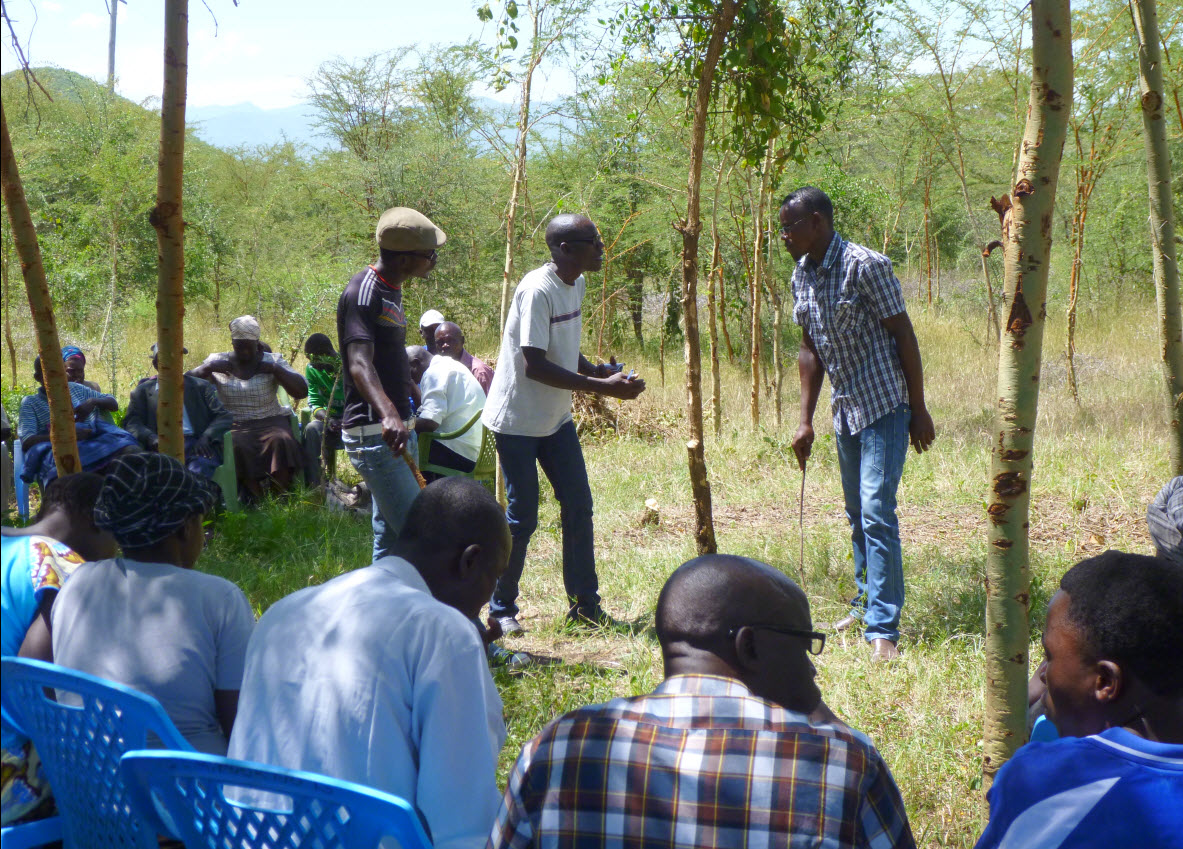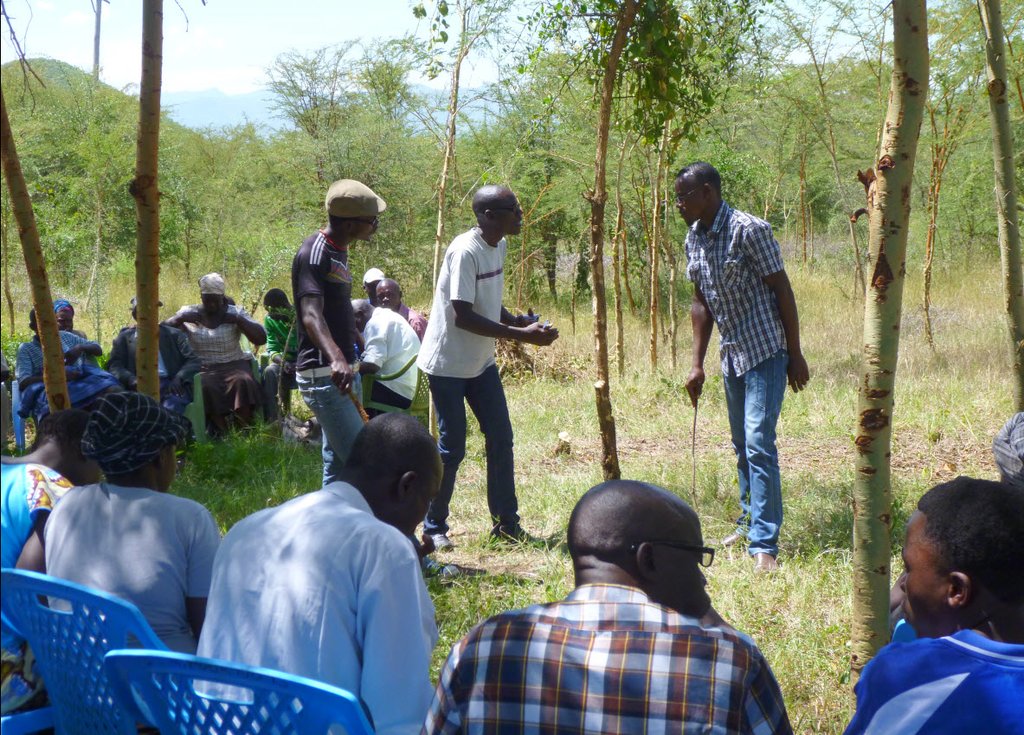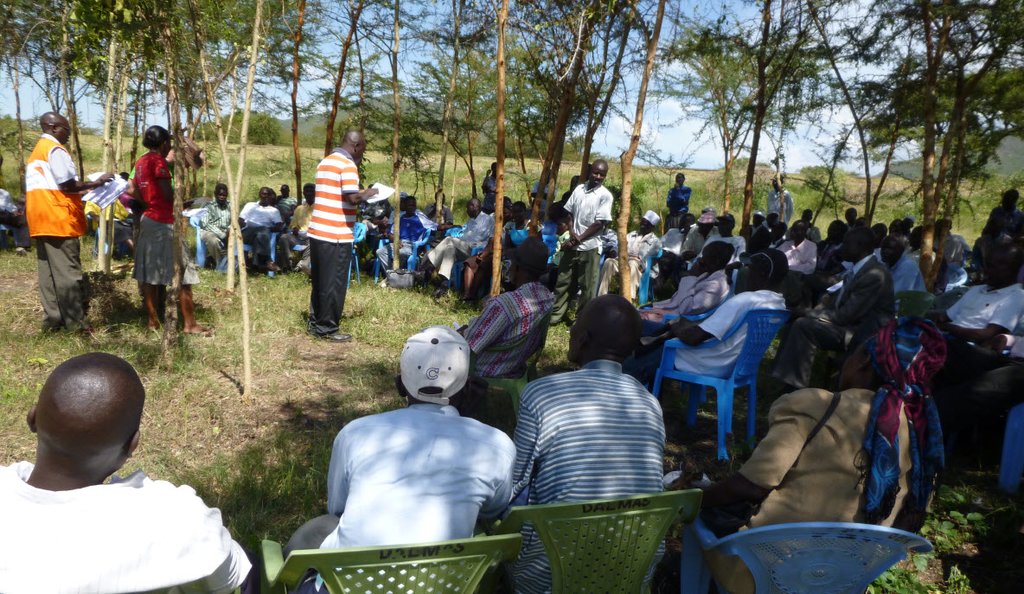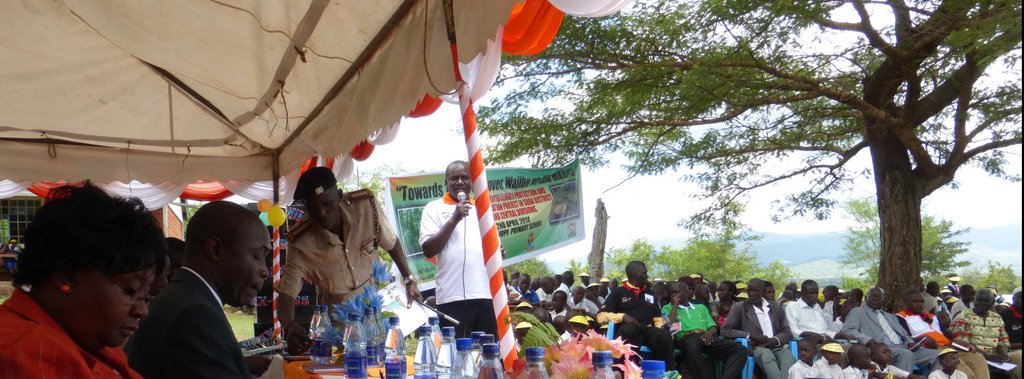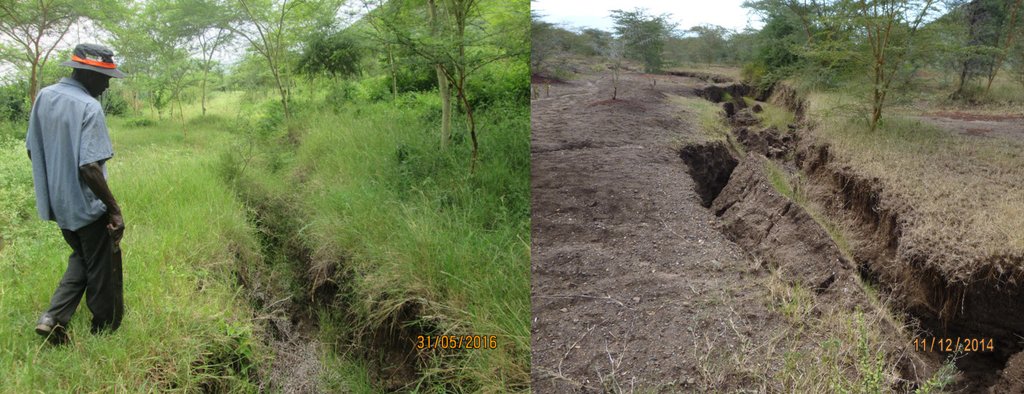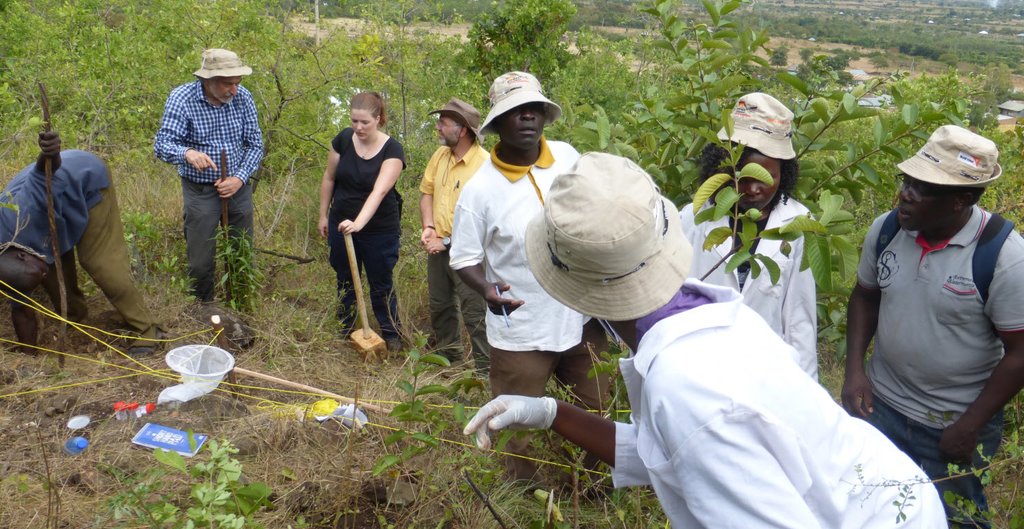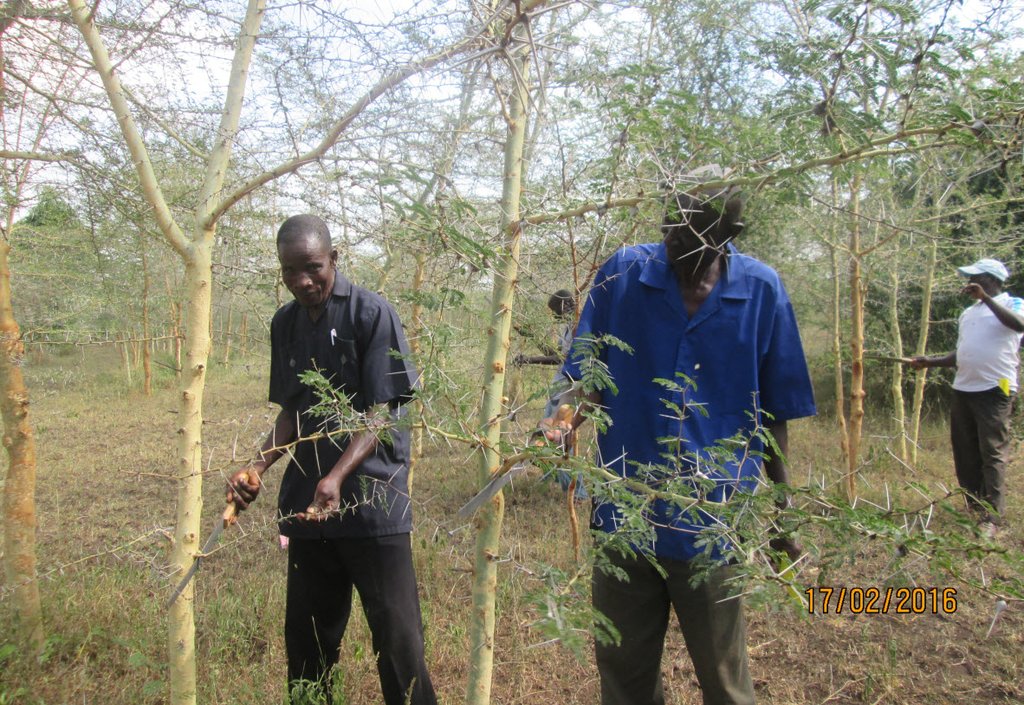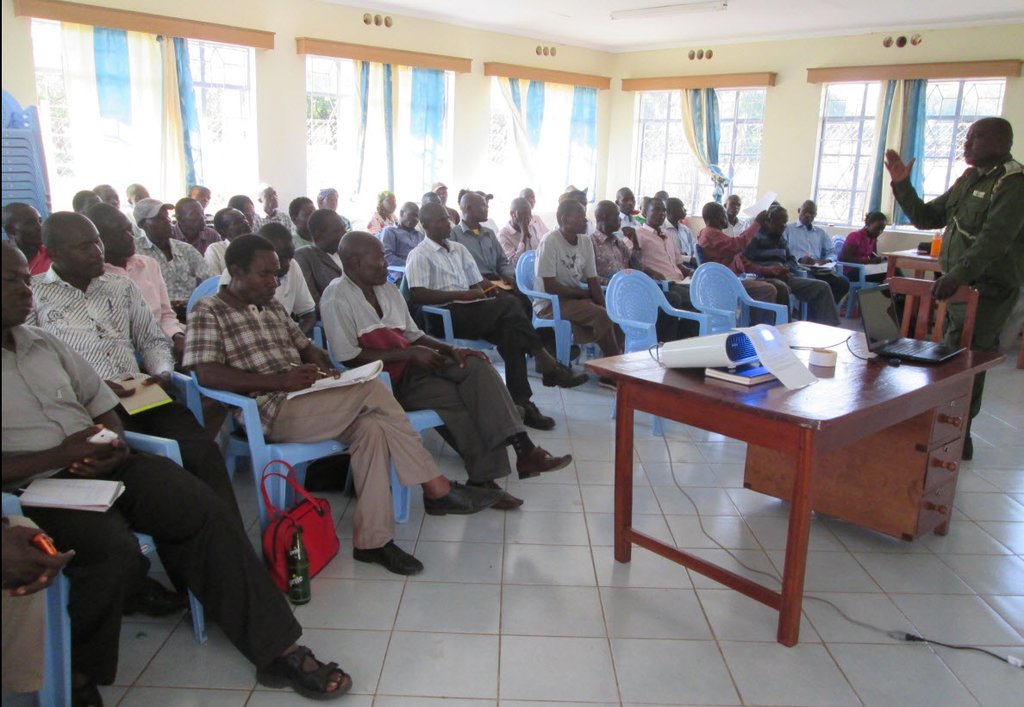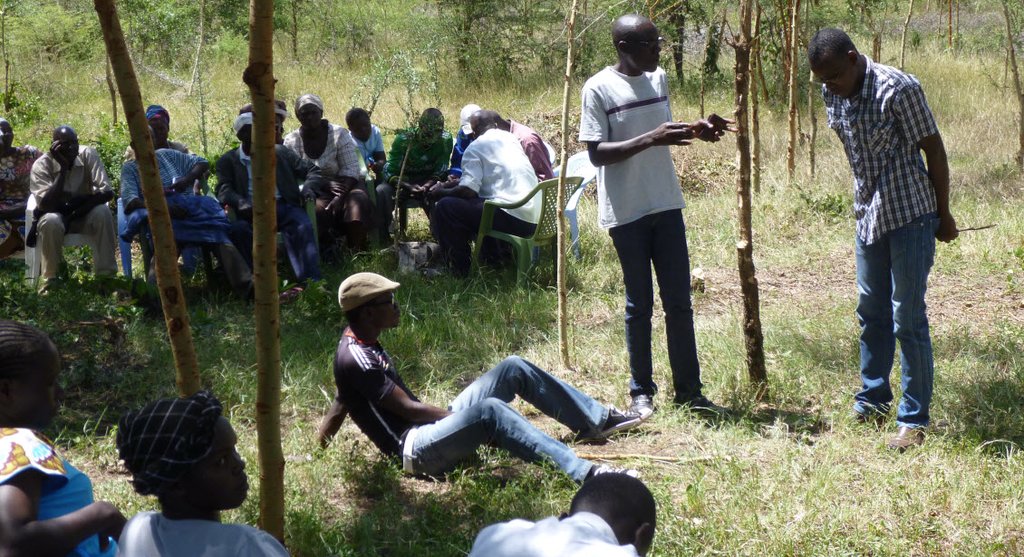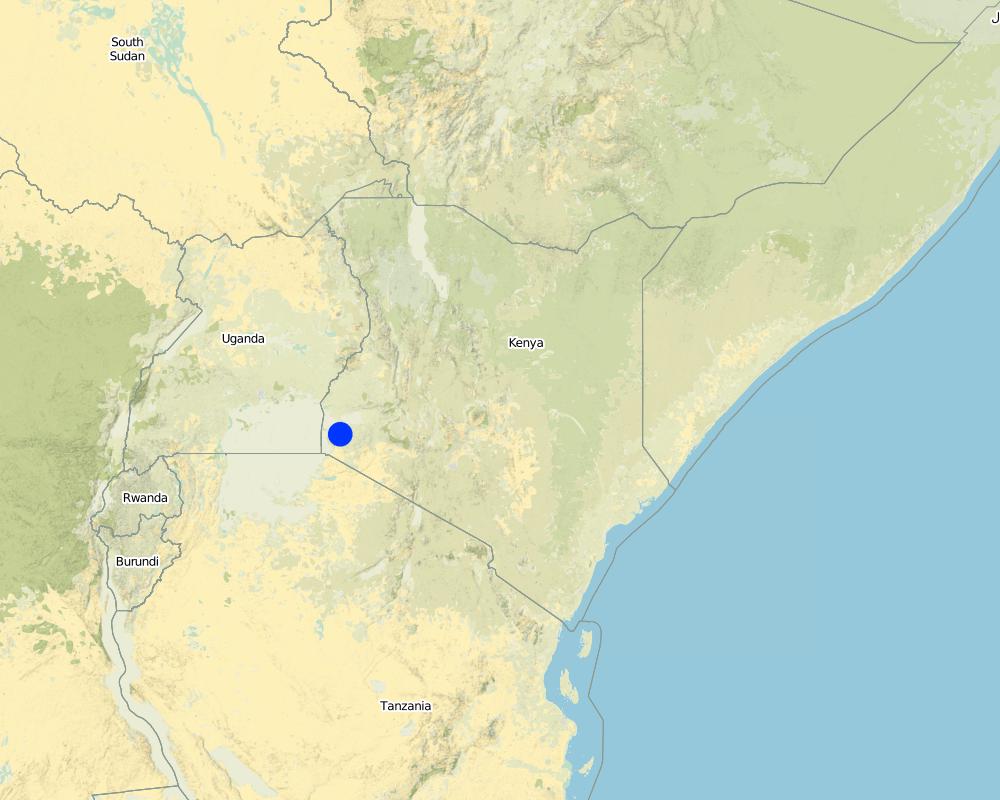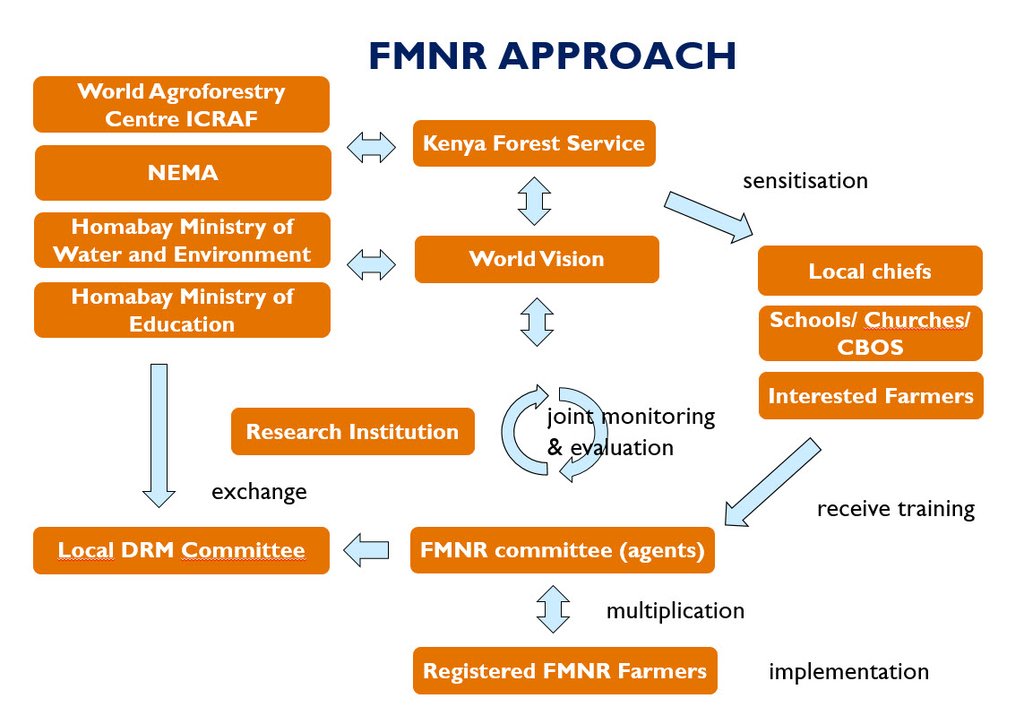FMNR implementation approach [เคนยา]
- ผู้สร้างสรรค์:
- การอัพเดท:
- ผู้รวบรวม: Thomas Kalytta
- ผู้เรียบเรียง: Irene Ojuok
- ผู้ตรวจสอบ: Alexandra Gavilano, Deborah Niggli, Hanspeter Liniger, Donia Mühlematter
FMNR nyale
approaches_733 - เคนยา
ดูส่วนย่อย
ขยายทั้งหมด ย่อทั้งหมด1. ข้อมูลทั่วไป
1.2 รายละเอียดที่ติดต่อได้ของผู้รวบรวมและองค์กรที่เกี่ยวข้องในการประเมินและการจัดเตรียมทำเอกสารของแนวทาง
วิทยากรหลัก
ผู้เชี่ยวชาญ SLM:
Ojuok Irene
+254725859689
Irene_Ojuok@wvi.org
World Vision
Lambwe Valley ADP Office, Homabay, Kenya
ผู้เชี่ยวชาญ SLM:
Kalytta Thomas
0041445101593
thomas_kalytta@wvi.org
World Vision
Kriesbachstrasse 30, 8600 Dübendorf, Switzerland
สวิตเซอร์แลนด์
ผู้ใช้ที่ดิน:
Sijenyi Onyiego William
0727369635 / 708297048
n/a
Obanda Environmental project Mbita Sub County, Dr Tom Mboya Okeyos Farm along Mbita Homabay Road. The site is by the road side
ชื่อของโครงการซึ่งอำนวยความสะดวกในการทำเอกสารหรือการประเมินแนวทาง (ถ้าเกี่ยวข้อง)
Book project: where people and their land are safer - A Compendium of Good Practices in Disaster Risk Reduction (DRR) (where people and their land are safer)ชื่อของโครงการซึ่งอำนวยความสะดวกในการทำเอกสารหรือการประเมินแนวทาง (ถ้าเกี่ยวข้อง)
World Vision (World Vision) - สวิตเซอร์แลนด์1.3 เงื่อนไขที่เกี่ยวข้องกับการใช้ข้อมูลที่ได้บันทึกไว้ผ่านทาง WOCAT
วันที่เก็บรวบรวมข้อมูล (ภาคสนาม):
28/11/2016
ผู้รวบรวมและวิทยากรหลักยอมรับเงื่อนไขเกี่ยวกับการใช้ข้อมูลที่ถูกบันทึกผ่านทาง WOCAT:
ใช่
1.4 การอ้างอิงถึงแบบสอบถามเรื่องเทคโนโลยี SLM
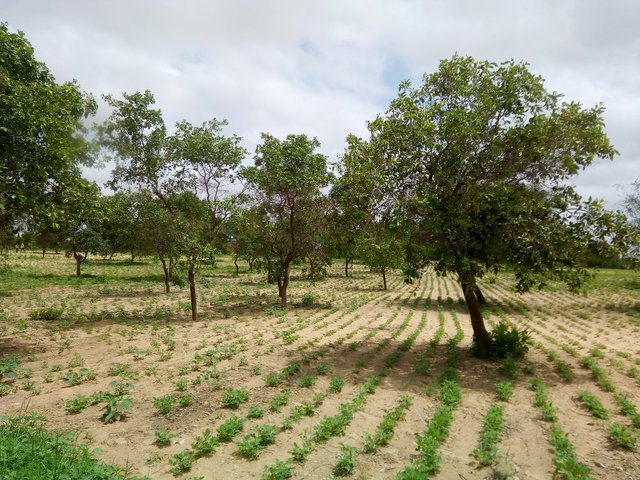
Régénération Naturelle Assistée (RNA) [เซเนกัล]
None
- ผู้รวบรวม: Diaminatou SANOGO
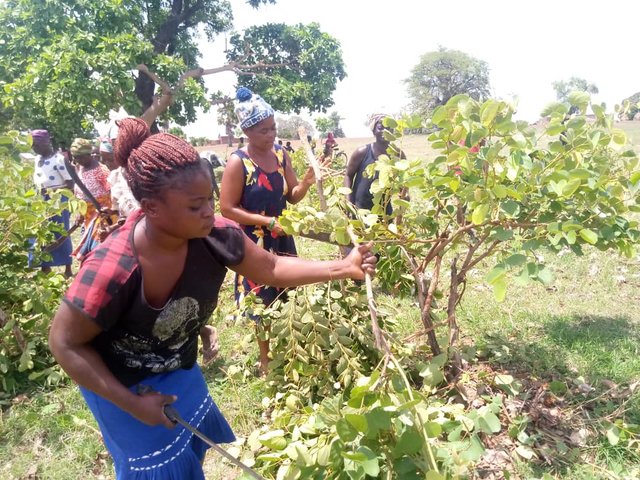
Farmer Managed Natural Regeneration(FMNR) [กานา]
Farmer Managed Natural Regeneration (FMNR) comprises a set of practices used by farmers to encourage the growth of native trees on agricultural land by systematically allowing regeneration and managing trees and shrubs from tree stumps, roots and seeds.
- ผู้รวบรวม: Joshua Adombire
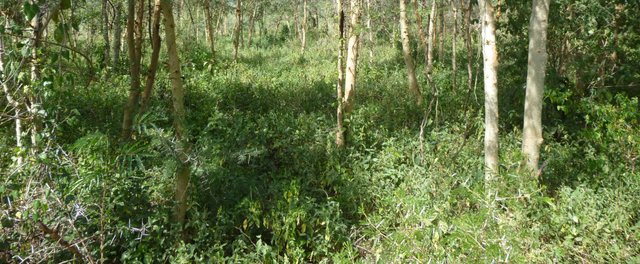
Farmer Managed Natural Regeneration (FMNR) [เคนยา]
Farmer Managed Natural Regeneration (FMNR) is a proven SLM Technology to restore degraded wasteland and improve depleted farmland. The farmer regu- lates and facilitates the re-growth of existing trees stumps, or self-sown seeds in the soil, and thus promotes soil fertility and through better ground cover, increases protection from runoff …
- ผู้รวบรวม: Thomas Kalytta
2. คำอธิบายของแนวทาง SLM
2.1 การอธิบายแบบสั้น ๆ ของแนวทาง
After consultations with local stakeholders, experts (from NEMA, ICRAF, KFS, Wildlife Kenya) and Homabay County Government representatives the FMNR approach is being introduced by World Vision through a public funded project. The aim of the approach is to promote FMNR and sustainable land and natural resource management through disseminating the basic idea of regenerating trees.
2.2 การอธิบายอย่างละเอียดของแนวทาง
การอธิบายอย่างละเอียดของแนวทาง:
The approach follows the basic principles of the of Training Trainers ToT (transfer of technology) concept i.e. key stakeholders and agents are trained to pass their knowledge on to others. Through a multi-stakeholder inception workshop all local stakeholders learn about the FMNR technology, its advantages and impacts. Representatives of the county and the national government are invited in order to get their support. Technical experts in agriculture are represented as well.
The Kenya Forest Service (KFS) and World Vision (WV) are the main actors in sensitising the local chiefs, school head teachers, CBOs, self-help groups, farmers' associations and individual farmers about FMNR, Disaster Risk Reduction and other topics. As a result farmers, teachers, schools management committee and CBO members register for the FMNR training, which is also carried out by KFS and WV. Selected farmers (those who are early adopters) are chosen as FMNR agents.
The registered FMNR practitioners (farmers, CBO members, school children, etc.) have to set aside a plot for FMNR application. They implement the technology. Each administrative unit (ward) establishes one FMNR committee under the lead of the local chief. The FMNR committee members (agents) are responsible for further dissemination for training and monitoring of the activities and maintaining the demonstration sites. They also organise exchange visits. They regularly report back to World Vision Development Facilitators. New FMNR farmers register with the committees. Research institutions (e.g. Maseno University) conduct studies to follow-up assumptions and to document change. The Community Disaster Management group is influenced by the FMNR committee and the County administration with regard to erosion control measures and gully restoration.The implementation is jointly monitored by the key stakeholders and documented by World Vision.
2.3 รูปภาพของแนวทาง
ข้อสังเกตทั่วไปเกี่ยวกับรูปภาพ:
Most of the training is done on site which practical demonstrations. 6 fenced demonstration sites and other show cases serve as pilots for the whole community.
2.4 วีดีโอของแนวทาง
ความคิดเห็น อธิบายสั้นๆ:
A majority of East Africa community relies on agriculture and livestock production as the main source of livelihood yet these sources are experiencing challenges including environmental degradation and climate change. A number of interventions have been promoted at household level. The video teaches about the approach applied in a couple of countries in East Africa.
วันที่:
09/04/2016
สถานที่:
Kenya, Uganda, Tanzania
ชื่อของผู้ถ่ายวีดีโอ:
World Vision
ความคิดเห็น อธิบายสั้นๆ:
Video in German language
Im Kampf gegen die Dürre hat Tony Rinaudo eine simple Methode entwickelt. Anstatt Bäume zu pflanzen, greift er zur Schere und stutzt die Pflanzen, die bereits wachsen. Mit sensationellem Erfolg.
The quality is better on youtube: www.youtube.com/watch?v=tgdcbxE-OQo
วันที่:
02/09/2016
สถานที่:
Tanzania
ชื่อของผู้ถ่ายวีดีโอ:
World Vision
2.5 ประเทศ ภูมิภาค หรือสถานที่ตั้งที่ได้นำแนวทางไปใช้
ประเทศ:
เคนยา
ภูมิภาค/รัฐ/จังหวัด: :
Hombay County
ข้อมูลเฉพาะเพิ่มเติมของสถานที่ตั้ง:
Suba and Mbita Sub-Counties
ความคิดเห็น:
One major demostration site is indicated only, kindly refer to the FMNR technology for more sites.
Map
×2.6 วันที่เริ่มต้นและสิ้นสุดของแนวทาง
ระบุปีที่เริ่ม:
2014
การสิ้นสุดลง (ถ้าแนวทางไม่ได้ใช้อีกต่อไป):
2017
ความคิดเห็น:
The approach of the FMNR technology was introduced by World Vision through a public funded project on climate protection and natural resource management. It received the “Total Kenya Eco Challenge Award” in 2016. The introduction was done through the following steps. The project staff were trained on the concept after which they trained Government staff in forestry, education and agriculture department including chiefs and assistant chief who were to turn out to be the entry point/ ambassadors for the concept. Intense trainings, awareness campaigns, practical demonstrations, consultative meetings and observations were conducted. Till now more than 300 hectares of degraded land was reclaimed through FMNR and over 1000 farmers adopted the practice already.
2.7 ประเภทของแนวทาง
- ใช้โครงงานหรือแผนงานเป็นฐาน
2.8 เป้าหมายหรือวัตถุประสงค์หลักของแนวทาง
The main objective of the approach is to promote FMNR and other natural resource management practices including agroforestry, crop diversification, sustainable rural energy sources and rehabilitation of highly degraded areas. It is also to utilise environmental education to advise on disaster risk reduction in order to increase the resilience of the target population against adverse effects of climate change and natural disasters.
2.9 เงื่อนไขที่เอื้ออำนวยหรือเป็นอุปสรรคต่อการนำเทคโนโลยีภายใต้แนวทางนี้ไปปฏิบัติใช้
บรรทัดฐานและค่านิยมทางสังคม วัฒนธรรม ศาสนา
- เอื้ออำนวย
enabling factors are the medicinal value of trees, herbs, the importance of places for worship and local rituals,
- เป็นอุปสรรค
livestock and fire put the FMNR sites at risk, fire is sparked on hill tops to attract rain. Some neighbouring farmers also complain about the return of biodiversity especially of monkeys and snakes. Some people still maintain old traditions (clean agriculture) hindering women participating in meetings, from planting trees or working on trees in their homestead. These people are more resistant to new ideas and approaches.
การมีไว้ให้หรือการเข้าถึงแหล่งการเงินและบริการ
- เอื้ออำนวย
natural materials can be used (wood, fruits, pods and grass) or sold, money for fire wood can be saved
การจัดตั้งระดับองค์กร
- เอื้ออำนวย
some schools have surplus land which is ideal for FMNR and tree planting,
- เป็นอุปสรรค
sometimes even members of the school management board send their cows for grazing that hampers the FMNR attempts of the school children
การร่วมมือหรือการทำงานประสานกันของผู้ลงมือปฏิบัติ
- เอื้ออำนวย
most partners are very supportive towards FMNR
กรอบแนวทางในการดำเนินการด้านกฎหมาย (การถือครองที่ดิน สิทธิในการใช้ที่ดินและน้ำ)
- เป็นอุปสรรค
a clear legal framework is lacking, the ownership of "wasteland" needs to be clear otherwise everybody tries to make benefit out of it (over grazing, charcoal burning)
นโยบาย
- เอื้ออำนวย
the Kenyan Government has issued a policy that 10% of the land should be covered by forest
การกำกับดูแลที่ดิน (การตัดสินใจ การนำเอาไปปฏิบัติใช้ และการบังคับใช้)
- เป็นอุปสรรค
young farmers complain that they have not the full rights over the family land, so they can only go for FMNR if the fathers agree. As young farmers who have not yet inherited land from their fathers according to customary laws still don’t own land which they could have long term plans. This hinders them from immediate adoption of FMNR due to land ownership rights. Mostly young men are given their share of land at about 40years. Hence this delays in uptake.
ความรู้เกี่ยวกับ SLM การเข้าถึงการสนับสนุนด้านเทคนิค
- เอื้ออำนวย
the Kenyan Forest Service officers were very supportive
ตลาด (จัดซื้อปัจจัยนำเข้า ขายผลิตภัณฑ์) และราคา
- เอื้ออำนวย
access to local markets are an advantage to sell the farm products e.g. honey is on demand, firewood, crop harvest, inputs are not very much needed apart from standard farming tool and strong gloves
ปริมาณงานที่ทำได้ กำลังคนที่มีให้
- เป็นอุปสรรค
FMNR can create more work but the longer-term benefits are obvious. However, lazy people who are not patient will not appear to training sessions because they might not have understood the benefits of the technology.
3. การมีส่วนร่วมและบทบาทของผู้มีส่วนได้ส่วนเสียที่เกี่ยวข้อง
3.1 ผู้มีส่วนได้ส่วนเสียที่เกี่ยวข้องในแนวทางนี้และบทบาท
- ผู้ใช้ที่ดินระดับท้องถิ่นหรือชุมชนระดับท้องถิ่น
small holder farmers, registered FMNR agents, DRR committees
The stakeholders were sensitised, received training, spread the message to peers and take part of the joint monitoring (agents)
- องค์กรที่ขึ้นอยู่กับชุมชน
CBO and self-help groups, religious leaders (Churches), local NGOs
took part in the training, mobilised their members to adopt the practice, make links to other stakeholders,
- ผู้เชี่ยวชาญ SLM หรือที่ปรึกษาการเกษตร
agricultural extension officers (weak), Kenya Forest Service officers
the KFS officers are involved in the technical training, while the farmers have to go and access the extension officers in the towns to receive their advice
- นักวิจัย
Maseno University
measure the tree density, the biodiversity change on the demonstration sites
- ครู เด็กนักเรียน หรือนักศึกษา
teachers and school children
practice FMNR and other innovative technologies
- องค์กรพัฒนาเอกชน
SEEK, Nature Kenya, Kenya Scouts
teach the children about environment and nature
- ภาคเอกชน
The National Bank in Homabay has been supplying seedlings for tree planting in Homabay County. This was done in collaboration with Kenya Scouts. Now they show also interest in the FMNR technology.
supplied seedlings at the initial stage, show interest in FMNR as well
- รัฐบาลระดับท้องถิ่น
local chiefs
mobilise their communities
- รัฐบาลแห่งชาติ (ผู้วางแผน ผู้ทำการตัดสินใจ)
Homabay County Government
very supportive, links to the different departments, provide match funding, take part in the joint monitoring
- องค์การระหว่างประเทศ
World Vision, ICRAF,
technical advisor, linkage to donors
3.2 การเกี่ยวข้องของผู้ใช้ที่ดินระดับท้องถิ่นหรือชุมชนระดับท้องถิ่นในช่วงต่างๆของแนวทาง
| ความเกี่ยวข้องของผู้ใช้ที่ดินระดับท้องถิ่นหรือชุมชนระดับท้องถิ่น | ระบุผู้ที่มีส่วนเกี่ยวข้องและอธิบายกิจกรรม | |
|---|---|---|
| การริเริ่มหรือการจูงใจ | ไม่ลงมือ | local farmers, DRR committee members and local chiefs were invited to take part in sensitisation sessions |
| การวางแผน | ปฏิสัมพันธ์ | local chiefs very active in supporting the new technology by motivation local farmers to become registered |
| การดำเนินการ | ปฏิสัมพันธ์ | FMNR committees as technical support, do also monitoring and reporting |
| การติดตามตรวจสอบหรือการประเมินผล | ปฏิสัมพันธ์ | done by FMNR committees, they receive data from all households jointly with other stakeholders and report back to the project management |
| research | จ่ายเงินหรือสนับสนุนจากภายนอก | done by students of the Maseno University by gathering primary data from demonstration sites very 6 months and compiling a biodiversity report |
3.3 แผนผังแสดงขั้นตอนการทำงาน (ถ้ามี)
คำอธิบาย:
1) Through a multi-stakeholder inception workshop all local stakeholders learn about the FMNR technology, its advantages and impacts.
Representatives of the county and the national government (chiefs) are invited to get their support. Technical experts are represented as well.
2) The Kenya Forest Service and World Vision are the main actors in SENSITISING the local chiefs, school head teachers, CBOs, Self-help Groups, farmer's associations and farmers on the FMNR technology, Disaster Risk Reduction and other topics.
3) As a result farmers, teachers, schools management committee and CBO members register for the FMNR TRAINING, also carried out be KFS and WV.
Selected farmers (early adopters) are chosen as FMNR agents.
4) The registered FMNR practitioners (farmers, CBO members, school children, etc.) have to set aside a plot for FMNR application. They IMPLEMENT the technology.
5) Each administrative unit (ward) establishes one FMNR committee under the lead of the local chief
6) The FMNR committee members (agents) are responsible for further dissemination of the technology, for training and monitoring of the activities and maintaining the demonstration sites. They also organised exchange visits. They report back to World Vision Development Facilitators.
7) New FMNR farmers register with the committees (MULTIPICATION).
8) Research institutions (Maseno University) conduct studies to follow-up assumptions and to document change.
9) The Community Disaster Management group is influenced by the FMNR committee and the County administration in regard to erosion control measures and gully restoration.
10) The implementation is JOINTLY MONITORED by the key stakeholders and documented by World Vision.
11) The Chief officers of the County Government conducts additional monitoring visits.
ผู้เขียน:
Thomas Kalytta
3.4 การตัดสินใจเลือกใช้เทคโนโลยี SLM
ระบุผู้ที่ทำการตัดสินใจเลือกเทคโนโลยีมากกว่าหนึ่งวิธีไปปฏิบัติใช้:
- ผู้ลงมือปฏิบัติที่เกี่ยวข้องทั้งหมดในฐานะที่เป็นส่วนรวมของแนวทาง
การอธิบาย:
The technology is transferred by World Vision from other African contexts. Each land-user is encouraged to try it on a piece of land. Each farmer decides whether he/she adopts it or wait and see how it develops in the neighbourhood. Demonstration plots help show case the impact and power of natural regeneration.
ระบุว่าการตัดสินใจตั้งอยู่บนพื้นฐานของ:
- การประเมินความรู้ SLM ที่ได้ทำการบันทึกไว้เป็นอย่างดี (การใช้ข้อมูลในการตัดสินใจ)
- สิ่งที่ค้นพบจากงานวิจัย
4. การสนับสนุนด้านเทคนิค การสร้างขีดความสามารถ และการจัดการด้านความรู้
4.1 การสร้างขีดความสามารถ / การอบรม
ได้มีการจัดอบรมให้แก่ผู้ใช้ที่ดินหรือผู้มีส่วนได้ส่วนเสียคนอื่น ๆ หรือไม่:
ใช่
ให้ระบุว่าใครเป็นผู้ได้รับการอบรม:
- ผู้ใช้ที่ดิน
- เจ้าหน้าที่ภาคสนาม / ที่ปรึกษา
ถ้าเกี่ยวข้อง ให้ระบุ เพศ อายุ สถานภาพ ชาติพันธุ์ เป็นต้น:
there are participants list available but no time to analyse them
รูปแบบการอบรม:
- เกษตรกรกับเกษตรกร
- ใช้พื้นที่ทำการสาธิต
- จัดการประชุมสู่สาธารณชน
หัวข้อที่พูด:
FMNR, Natural Resource Management, Disaster Risk Reduction, Conservation Agriculture etc.
4.2 การบริการให้คำแนะนำ
ผู้ใช้ที่ดินมีการเข้าถึงการรับบริการให้คำปรึกษาหรือไม่:
ใช่
ระบุว่ามีบริการให้คำปรึกษาหรือไม่:
- ไปเยี่ยมชมสถานที่
การอธิบาย/แสดงความคิดเห็น:
Done by the FMNR committees and development facilitators from KFS and WV.
4.3 การเสริมความแข็งแกร่งให้กับสถาบัน (การพัฒนาองค์กร)
สถาบันได้รับการจัดตั้งขึ้นมาหรือเสริมความแข็งแกร่งโดยแนวทางนี้หรือไม่:
- ใช่ อย่างมาก
ระบุระดับของสถาบันที่ได้รับการเสริมความแข็งแกร่งหรือจัดตั้งขึ้นมา:
- ท้องถิ่น
อธิบายถึงสถาบัน บทบาทและความรับผิดชอบ สมาชิก เป็นต้น:
schools, churches, CBOs.
ระบุประเภทของการให้ความช่วยเหลือสนับสนุน:
- การสร้างขีดความสามารถ / การอบรม
ให้รายละเอียดเพิ่มเติม :
same as above
4.4 การติดตามตรวจสอบและประเมินผล
การติดตามตรวจสอบและประเมินผลเป็นส่วนหนึ่งของแนวทางหรือไม่:
ใช่
ความคิดเห็น:
Yes, joint monitoring and evaluation
ถ้าตอบว่าใช่ แสดงว่าการจัดเตรียมเอกสารนี้มุ่งหวังที่จะเอาไปใช้สำหรับการติดตามตรวจสอบและประเมินผลใช่หรือไม่:
ใช่
ความคิดเห็น:
perhaps, but separate documents will be created as per donor requirement.
4.5 การวิจัย
การวิจัยเป็นส่วนหนึ่งของแนวทางหรือไม่:
ใช่
ระบุหัวข้อเรื่อง:
- นิเวศวิทยา
- biodiversity
ให้ข้อมูลเพิ่มเติมและให้ระบุผู้ทำการวิจัย:
Maseno University, botanic and zoological studies, see separate reports
5. การสนับสนุนด้านการเงินและวัสดุอุปกรณ์
5.1 ระบุงบประมาณประจำปีสำหรับแนวทาง SLM นี้
ระบุงบประมาณประจำปีสำหรับแนวทาง SLM นี้ เป็นหน่วยดอลลาร์สหรัฐ:
9230.00
ถ้าหากว่างบประมาณประจำปีไม่เป็นที่ทราบแน่นอน ให้ระบุช่วงลงไป:
- 2,000-10,000
แสดงความคิดเห็น (แหล่งของการระดมทุน ผู้บริจาคคนสำคัญ):
The initiative is funded by public donors and co-funded by the county government. For the approach including awareness, campaigns, training and monitoring as well as exposure trips 9230 USD were budgeted per year.
5.2 การสนับสนุนด้านการเงิน / วัสดุอุปกรณ์ให้แก่ผู้ใช้ที่ดิน
ผู้ใช้ที่ดินได้รับการสนับสนุนด้านการเงิน / วัสดุอุปกรณ์ไปปฏิบัติใช้เทคโนโลยีหรือไม่:
ใช่
ถ้าใช่ ให้ระบุประเภทของการสนับสนุน เงื่อนไขและผู้จัดหามาให้:
transport to the demo sites, for local farmers and stakeholders, food during the training, materials for sensitisation, training & monitoring, accommodation only during exposure trips
5.3 เงินสนับสนุนสำหรับปัจจัยนำเข้า (รวมถึงแรงงาน)
- ไม่มี
ถ้าแรงงานโดยผู้ใช้ที่ดินเป็นปัจจัยนำเข้าที่มีอยู่มากมาย ระบุด้วยว่าเนื่องจาก:
- สมัครใจ
5.4 เครดิต
มีการจัดหาเครดิตมาให้ภายใต้แนวทาง SLM หรือไม่:
ไม่ใช่
5.5 แรงจูงใจหรือเครื่องมืออื่น ๆ
แรงจูงใจหรือเครื่องมืออื่น ๆ ได้ถูกนำไปใช้ส่งเสริมการใช้เทคโนโลยี SLM หรือไม่:
ไม่ใช่
6. การวิเคราะห์ผลกระทบและการสรุป
6.1 ผลกระทบของแนวทาง
ทำให้ผู้ใช้ที่ดินระดับท้องถิ่นมีอำนาจขึ้น ปรับปรุงการเข้าร่วมของผู้มีส่วนได้ส่วนเสียให้ดีขึ้นหรือไม่:
- ไม่ใช่
- ใช่ เล็กน้อย
- ใช่ ปานกลาง
- ใช่ อย่างมาก
As it connect the different actors and levels.
ช่วยในการตัดสินใจโดยดูจากหลักฐาน ได้หรือไม่:
- ไม่ใช่
- ใช่ เล็กน้อย
- ใช่ ปานกลาง
- ใช่ อย่างมาก
Evidence can be easily seen by the great replication effect among the land users of the area.
ช่วยให้ผู้ใช้ที่ดินนำเอาเทคโนโลยี SLMไปใช้และบำรุงรักษาสภาพไว้ได้หรือไม่:
- ไม่ใช่
- ใช่ เล็กน้อย
- ใช่ ปานกลาง
- ใช่ อย่างมาก
Yes, because the land users have now access to local technical experts (FMNR agents) and demonstration farms.
ปรับปรุงความร่วมมือกันและการดำเนิน งานของ SLM ได้อย่างมีประสิทธิผลหรือไม่:
- ไม่ใช่
- ใช่ เล็กน้อย
- ใช่ ปานกลาง
- ใช่ อย่างมาก
Yes, greatly, as FMNR committees were established which coordinate the implementation in each ward in a cost effective way.
ระดมกำลังหรือปรับปรุงการเข้าถึงแหล่ง เงินทุนสำหรับการดำเนินการ SLM หรือไม่:
- ไม่ใช่
- ใช่ เล็กน้อย
- ใช่ ปานกลาง
- ใช่ อย่างมาก
No, the SLM itself creates sources of income but the approach doesn't mobilise funds only knowledge.
ปรับปรุงความรู้และความสามารถของผู้ใช้ที่ดินในการดำเนินการ SLM หรือไม่:
- ไม่ใช่
- ใช่ เล็กน้อย
- ใช่ ปานกลาง
- ใช่ อย่างมาก
Yes, greatly.
ปรับปรุงความรู้และความสามารถของผู้มีส่วนได้ส่วนเสียคนอื่น ๆ ให้ดีขึ้นหรือไม่:
- ไม่ใช่
- ใช่ เล็กน้อย
- ใช่ ปานกลาง
- ใช่ อย่างมาก
Yes, as it brings all relevant stakeholders together especially during the initiation and monitoring.
ทำให้ผู้ใช้ที่ดินระดับท้องถิ่นมีอำนาจขึ้น ปรับปรุงการเข้าร่วมของผู้มีส่วนได้ส่วนเสียให้ดีขึ้นหรือไม่:
- ไม่ใช่
- ใช่ เล็กน้อย
- ใช่ ปานกลาง
- ใช่ อย่างมาก
There is quite some exchange and strengthening among the stakeholders. Part of them are local NGOs, CBOs and churches.
ช่วยบรรเทาความขัดแย้งหรือไม่:
- ไม่ใช่
- ใช่ เล็กน้อย
- ใช่ ปานกลาง
- ใช่ อย่างมาก
Yes, a little, as it brings the local stakeholders together where they can talk and solve conflict e.g. between livestock keepers and farmers.
ทำให้กลุ่มด้อยโอกาสมีอำนาจทางสังคมและเศรษฐกิจหรือไม่:
- ไม่ใช่
- ใช่ เล็กน้อย
- ใช่ ปานกลาง
- ใช่ อย่างมาก
Yes, a little, as even farmers with very small plots can raise their voices and get ideas how to increase the productivity.
ปรับปรุงความทัดเทียมกันด้านเพศและให้อำนาจแก่ผู้หญิงและเด็กผู้หญิงหรือไม่:
- ไม่ใช่
- ใช่ เล็กน้อย
- ใช่ ปานกลาง
- ใช่ อย่างมาก
Women are included in the discussions and training. They get empowered as the households produce fire wood which saves a lot of time for the collection. Some can also sell surplus fire wood. High yield from the farms with trees address food security. Ensuring there is food in a household is always the woman's responsibility.
ส่งเสริมให้เยาวชนหรือบุตรหลานของผู้ใช้ที่ดินให้เข้าร่วมใน SLM:
- ไม่ใช่
- ใช่ เล็กน้อย
- ใช่ ปานกลาง
- ใช่ อย่างมาก
Yes, very much. During the discussions the young generation raises their voice and discuss with their fathers how to improve the land-use and productivity.
ปรับปรุงประเด็นของการถือครองที่ดินหรือสิทธิในการใช้ ซึ่งขัดขวางการนำเทคโนโลยีไปใช้ให้ดีขึ้น:
- ไม่ใช่
- ใช่ เล็กน้อย
- ใช่ ปานกลาง
- ใช่ อย่างมาก
Maybe a little, as these issues can be discussed during the gatherings.
นำไปสู่ความมั่นคงด้านอาหารหรือปรับปรุงโภชนาการให้ดีขึ้น:
- ไม่ใช่
- ใช่ เล็กน้อย
- ใช่ ปานกลาง
- ใช่ อย่างมาก
Since the approach led to the implementation of FMNR and FMNR increases the production and promotes diversification the land-use types.
ปรับปรุงการเข้าถึงตลาดหรือไม่:
- ไม่ใช่
- ใช่ เล็กน้อย
- ใช่ ปานกลาง
- ใช่ อย่างมาก
นำไปสู่การเข้าถึงเรื่องน้ำและสุขาภิบาลได้ดีขึ้นหรือไม่:
- ไม่ใช่
- ใช่ เล็กน้อย
- ใช่ ปานกลาง
- ใช่ อย่างมาก
Not the approach but the related technology.
นำไปสู่การใช้ที่ดินอย่างยั่งยืนหรือแหล่งพลังงานหรือไม่:
- ไม่ใช่
- ใช่ เล็กน้อย
- ใช่ ปานกลาง
- ใช่ อย่างมาก
Not the approach but the related technology. The FMNR campaigns are always integrated with promotions for solar and improved cookstoves and the farmers uptake for clean energy has improved through this. It thus leads to sustainable use of energy indirectly.
ปรับปรุงความสามารถของผู้ใช้ที่ดินในการปรับตัวให้เข้ากับการเปลี่ยนแปลงของสภาพภูมิอากาศหรือสภาพที่รุนแรงและภัยพิบัติหรือไม่:
- ไม่ใช่
- ใช่ เล็กน้อย
- ใช่ ปานกลาง
- ใช่ อย่างมาก
Yes, the approach increases the knowledge of the farmers on Climate change and provides options to adapt better. They now appreciate the indeginous tree species and their value and ability to survive in changing climatic conditions.
Not the approach but the related technology.
6.2 แรงจูงใจหลักของผู้ใช้ที่ดินเพื่อที่จะนำ SLM ไปปฏิบัติใช้
- การผลิตที่เพิ่มขึ้น
crop production, e.g. increase from 5 to 8 bags of maize/unit. More wood is obtained from FMNR sites because of biomass increase. Honey production is possible. Fodder production and others.
- กำไร (ความสามารถ) อัตราส่วนค่าใช้จ่ายต่อผลประโยชน์ที่เพิ่มขึ้น
FMNR has provided additional/ alternative sources of income to the beneficiaries. Sale from wood, honey, medicinal components and non-wood products etc. This has led to a diversification of income. The farmer can sell more products and make more profit.
- การเสื่อมของที่ดินลดลง
Areas with deep gullies could be restored through the application of FMNR. There is clear evidence that the technology has a high potential to rehabilitate degraded ecosystems.
- ความเสี่ยงของภัยพิบัติลดลง
FMNR also serves to mitigate the impact of annual floods to the crops and settlements. FMNR also improves the micro climate and water availability. That can make an important difference for the yields in years of drought. The trees also act as strong windbreakers thus minimizing disasters related to strong winds like blowing of roofs that is rampant.
- จิตสำนึกด้านสิ่งแวดล้อม
FMNR is being discussed and applied on the background of the huge land degradation and deforestation of the area that has seriously affected biodiversity, soil fertility and water availability.
- ความรู้และทักษะ SLM ที่เพิ่มพูนขึ้น
The approach aims at promoting knowledge and skills on FMNR - an effective SLM technology.
- การปรับปรุงด้านสุทรียภาพ
The technology covers barren soil and bleak areas. I can contribute to attract more tourists to the area.
- reduced soil ersosion
Farmers realised that they lost fertile soil in the recent decades due to increasing soil and wind erosion. FMNR protects the soil, improves the micro-climate and nutritious content of the soil.
- grass production for fodder and roofing
In dry spells the farmers lack pastures for their livestock. Grass production is an important coping mechanism to bridge these times. Some types of grass are also needed to cover traditional roofs and huts. Grass production is often promoted on larger school compounds. It can create additional income for school improvements or orphan support if the community respects the rules.
6.3 ความยั่งยืนของกิจกรรมของแนวทาง
ผู้ใช้ที่ดินสามารถทำให้สิ่งต่างๆ ที่ได้ปฏิบัติใช้โดยแนวทางนี้ยั่งยืนได้หรือไม่ (โดยไม่มีการสนับสนุนจากภายนอก):
- ใช่
ถ้าตอบว่าใช่ ให้อธิบายว่าอย่างไร :
The local FMNR agents are well known in the community as environmentalists. They have demonstration sites on their farms. They took part in FMNR campaigns and training. Every visitor gets attracted by the technology. The agents introduce them. By applying the new technology their neighbours see and learn about FMNR as well. Even on other occasions in the community e.g funerals, religious meetings, ceremonies, the agents use the opportunity to reach more people with FMNR.
6.4 จุดแข็งและข้อได้เปรียบของแนวทาง
| จุดแข็ง / ข้อได้เปรียบของแนวทางในทัศนคติของผู้ใช้ที่ดิน |
|---|
| Sensitisation is integrated in community meetings or gatherings which bring many people together. Some of the meetings are called by local administrators who were the first champions of FMNR so this helps in infusing the knowledge through the sessions. Implementation is mostly by seeing and doing. Many farmers are consciously or subconsciously adopting FMNR as they see the sites in their neighbourhood. As the farmers visit each other alongside other engagements, FMNR monitoring continues since the people like to share new things with their friends and what they have learned. |
| จุดแข็ง / ข้อได้เปรียบของแนวทางในทัศนคติของผู้รวบรวมหรือวิทยากรหลัก |
|---|
| The ToT approach by working with FMNR agents and a local FMNR committee bridges the gap brought about by the absence of agricultural extension workers - only a few farmers actually visit them in their office in town. Also the day-by-day monitoring is done b y the FMNR committee members and not by the project staff alone. A big advantage is the support of the Kenya Forest Service officers. They were ready to help with the on-site training. Crucial for the success of any approach is to involve and win over the local chiefs. They really have understood the benefits and even try to apply the technology themselves. |
6.5 จุดอ่อน / ข้อเสียเปรียบของแนวทางและวิธีในการแก้ไข
| จุดอ่อน / ข้อเสียเปรียบในทัศนคติของผู้ใช้ที่ดิน | สามารถแก้ไขปัญหาได้อย่างไร |
|---|---|
| Lazy people who are not patient will not appear to training sessions because they might not have understood the benefits of the technology. | Continuous engagements and ensuring the sites are at strategic places where all farmer can see them easily. These people can be convinced through the success of others. |
| The approach seeks the support of all levels (County and local government, CBOs, local farmers, schools etc.) so it is quite time consuming and requires skilled personal as facilitators. | A donor needs to take this into account in terms of available budget and life time of the project. |
| จุดอ่อน / ข้อเสียเปรียบในทัศนคติของผู้รวบรวมหรือวิทยากรหลัก | สามารถแก้ไขปัญหาได้อย่างไร |
|---|---|
| Some people still maintain old traditions (clean agriculture) hindering women participating in meetings, from planting trees or working on trees in their homestead. These people are more resistent to new ideas and approaches. | The tradition is being demystified especially with the church leaders and with more exposure. This might change their thinking. |
7. การอ้างอิงและการเชื่อมต่อ
7.1 วิธีการหรือแหล่งข้อมูล
- ไปเยี่ยมชมภาคสนาม การสำรวจพื้นที่ภาคสนาม
3 field visits
- การสัมภาษณ์กับผู้ใช้ที่ดิน
2 interview
- การสัมภาษณ์ผู้เชี่ยวชาญด้าน SLM หรือผู้ชำนาญ
3 Skype calls
- การเก็บรวบรวมมาจากรายงานและเอกสารที่มีอยู่
4 reports
7.2 การอ้างอิงถึงสิ่งตีพิมพ์
ชื่อเรื่อง ผู้เขียน ปี ISBN:
Farmer-Managed Natural Regeneration Enhances Rural Livelihoods in Dryland West Africa, Weston, Peter, Reaksmey Hong, Carolyn Kaboré & Christian A. Kull, Environmental Management Volume 55, Issue 6, pp 1402–1417,2015, ISBN 0364-152X00267-015-0469-1
ช่องทางในการสืบค้น และราคา:
Springer, USD 35
ชื่อเรื่อง ผู้เขียน ปี ISBN:
Re-greening the Sahel: farmer-led innovation in Burkina Faso and Niger, Reij, C.; Tappan, G.; Smale, M., in Millions fed : proven successes in agricultural development, 2009, ISBN 9780896296619
ช่องทางในการสืบค้น และราคา:
International Food Policy Research Institute
7.3 เชื่อมโยงกับข้อมูลที่มีอยู่บนออนไลน์
ชื่อเรื่องหรือคำอธิบาย:
Farmer Managed Natural Regeneration Hub
URL:
http://fmnrhub.com.au/
ชื่อเรื่องหรือคำอธิบาย:
Der Waldmacher. Der Agrarexperte Tony Rinaudo verwandelt abgeholzte Steppen in grüne Wälder. Seine Methode könnte für Afrika bedeutender werden als Milliarden von Dollar Entwicklungshilfe.
URL:
http://www.tagesanzeiger.ch/wissen/natur/der-waldmacher/story/26739960
ลิงก์และโมดูล
ขยายทั้งหมด ย่อทั้งหมดลิงก์

Régénération Naturelle Assistée (RNA) [เซเนกัล]
None
- ผู้รวบรวม: Diaminatou SANOGO

Farmer Managed Natural Regeneration(FMNR) [กานา]
Farmer Managed Natural Regeneration (FMNR) comprises a set of practices used by farmers to encourage the growth of native trees on agricultural land by systematically allowing regeneration and managing trees and shrubs from tree stumps, roots and seeds.
- ผู้รวบรวม: Joshua Adombire

Farmer Managed Natural Regeneration (FMNR) [เคนยา]
Farmer Managed Natural Regeneration (FMNR) is a proven SLM Technology to restore degraded wasteland and improve depleted farmland. The farmer regu- lates and facilitates the re-growth of existing trees stumps, or self-sown seeds in the soil, and thus promotes soil fertility and through better ground cover, increases protection from runoff …
- ผู้รวบรวม: Thomas Kalytta
โมดูล
ไม่มีโมดูล


